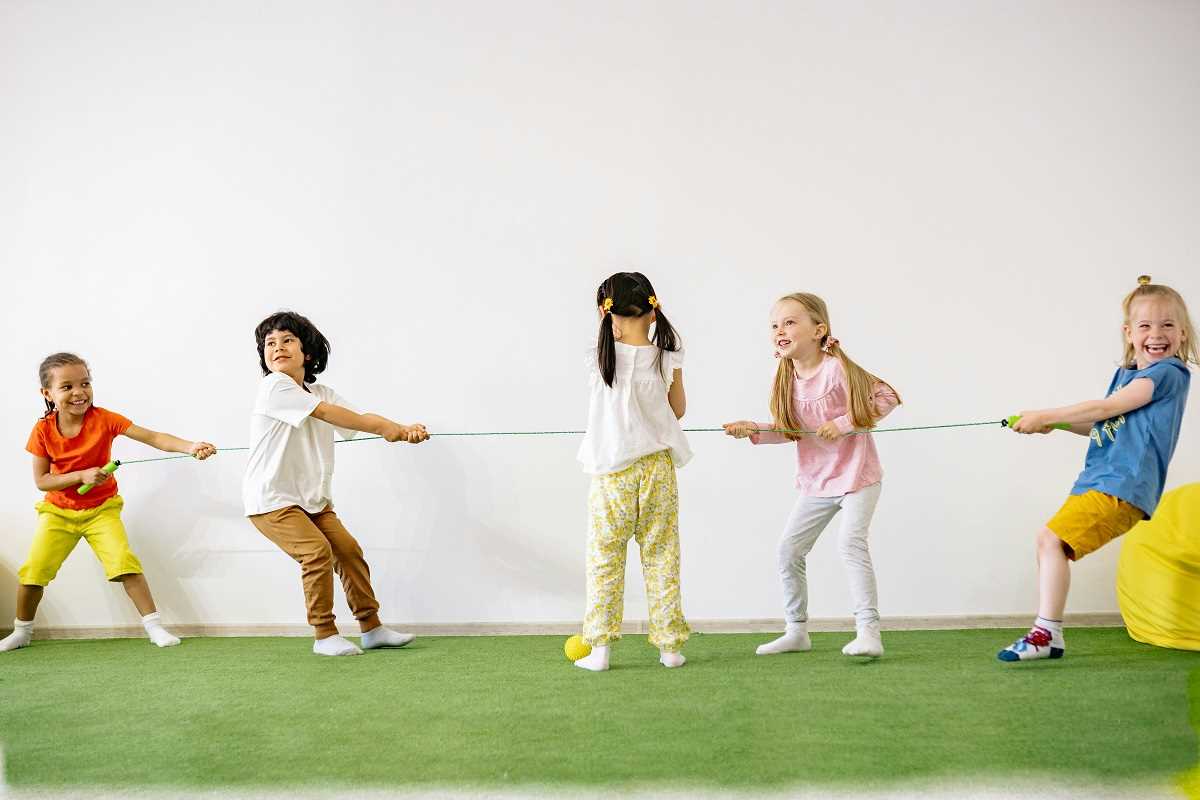When you think back to your own childhood, chances are some of your happiest memories involve running around outside, climbing trees, or playing tag with friends until the streetlights came on. That’s the magic of active play. It’s those seemingly simple moments that not only bring joy but also lay the foundation for your physical, mental, and emotional growth.
For kids today, active play is more important than ever before. With the rise of screen time and increasingly structured schedules, unstructured movement and playtime are becoming endangered species. But research shows why kids need to climb, run, jump, and explore every day to thrive in every way imaginable.
Here’s a closer look at the science behind active play and how it benefits kids, plus some tips for weaving more play into your family’s daily life.
What Exactly Is Active Play?
Active play is all about movement, imagination, and fun. It includes anything from simple physical activities like kicking a ball to more adventurous games like building forts or navigating the neighborhood jungle gym. It’s unstructured, often kid-led, and doesn’t come with the rules or competitiveness of organized sports.
Active play usually features two key ingredients that make it so beneficial:
- Movement: It gets kids’ bodies moving, from hopping and skipping to full-on cartwheeling across the yard.
- Creativity: Active play isn’t just about physical activity; it’s also an outlet for imagination, problem-solving, and social interaction.
How Active Play Boosts Physical Health
We all know that moving is good for us, but for kids, active play is essential for healthy development. Here’s why staying active is so crucial:
1. Building Strong Bones and Muscles
Jumping, running, and climbing help kids develop strong bones and muscles during critical growth periods. Activities like hopscotch or playing soccer naturally encourage bone-strengthening movements, which are crucial for long-term health.
2. Improving Heart Health
Did you know the benefits of active play mimic those of a heart-healthy workout? Climbing a slide, playing tag, or even chasing the family dog gets kids’ hearts pumping in ways that improve endurance, circulation, and overall cardiovascular health.
3. Boosting Coordination and Motor Skills
From balancing on a log to throwing a ball, active play refines a child’s gross motor skills (big movements) and fine motor skills (smaller, intricate actions). These skills serve as building blocks for things they’ll need later—like learning to hold a pencil or navigate team sports.
Better Brains Through Play
Active play isn’t just about training strong bodies—it’s also great for brains! Moving in playful ways actually supports cognitive development in fascinating ways.
- Stimulates Brain Development: Research shows active play stimulates regions of the brain related to memory, attention, and problem-solving. Activities that involve coordination (like climbing a jungle gym or jumping rope) encourage the brain to create new neural connections.
- Improves Focus and Learning: Kids who engage in regular physical play tend to do better academically. Movement helps kids burn off excess energy, leaving them better able to focus and retain information during school or homework.
- Encourages Creativity and Critical Thinking: Imaginative games like “pretend cooking” outdoors or building obstacle courses challenge kids to think critically and inventively. Active play encourages them to come up with solutions (how do I build the tallest LEGO tower?) and think outside the box.
The Emotional Benefits of Active Play
Beyond brains and bodies, active play is a balm for kids’ emotional health and well-being.
- Stress Relief: Kids experience stress too—whether it’s anxiety about homework, social interactions, or other big feelings they’re still learning to process. Active play is a proven way to release tension and encourage relaxation.
- Boosts Confidence and Independence: Mastering a new skill during play, like finally making it across the monkey bars, boosts a child’s self-confidence. Active play also lets kids exercise independence by exploring and deciding what feels fun or challenging for them.
- Builds Emotional Resilience: Play often involves falling, failing, or finding a plan B (especially during outdoor adventures). These little moments of frustration build resilience and teach kids how to persevere in the face of challenges.
- Supports Social Skills: When kids play together, they naturally practice teamwork, communication, and conflict resolution. Games like hide-and-seek or freeze tag build the foundations of friendships while teaching cooperative skills they’ll use for life.
Easy Active Play Ideas
The beauty of active play is that it doesn’t require fancy toys or elaborate setups. Here are some simple ideas to inspire movement and fun:
- Classic Games: Think tag, Red Light-Green Light, or Simon Says. These timeless activities never go out of style.
- Obstacle Courses: Use chairs, pillows, and whatever you have on hand to create a backyard (or living room) adventure course.
- Dance Parties: Crank up some tunes and get everyone moving—parents included!
- Scavenger Hunts: Hide objects around your home or yard and have your kids race to find them. Bonus points for adding clues!
- Nature Walks: Head outside and explore nearby trails or even just your neighborhood. Bring binoculars to spot birds or bugs for added fun.
- Bike Rides or Scooting: Encourage active transportation, whether it’s biking to the park or scooting down the driveway.
Tips for Encouraging Active Play
While play often comes naturally to kids, there are times when parents might need to give them a gentle nudge. Try these ideas to keep active play a daily habit:
- Limit Screen Time: Set boundaries around TV, tablet, and gaming time to allow room for outdoor play.
- Lead by Example: When kids see you enjoying active hobbies, like yoga or hiking, they’ll be more excited to join in.
- Make Play a Routine: Build movement into your daily schedule, whether it’s a morning walk to the bus stop or evening catch in the yard.
- Invite Friends Over: Active play is often more fun in a group, so coordinate with other families for a playdate or park meetup.
- Be Flexible: Some kids may shy away from sports or structured activities, and that’s okay. Encourage any type of movement they enjoy, whether it’s hula hooping, skating, or simply running wild on a playground.
Active play isn’t just a kid thing—parents play a huge role in creating positive play experiences. You don’t need to choreograph activities or hover; sometimes, the best thing you can do is step back and create the opportunity for your child to take the lead.
If you’re feeling playful, jump in! Chase your kids through sprinklers, shoot hoops, or just roll down a grassy hill together. These moments aren’t just great for your child—they’re good for your physical and emotional health, too.
 (Image via
(Image via





